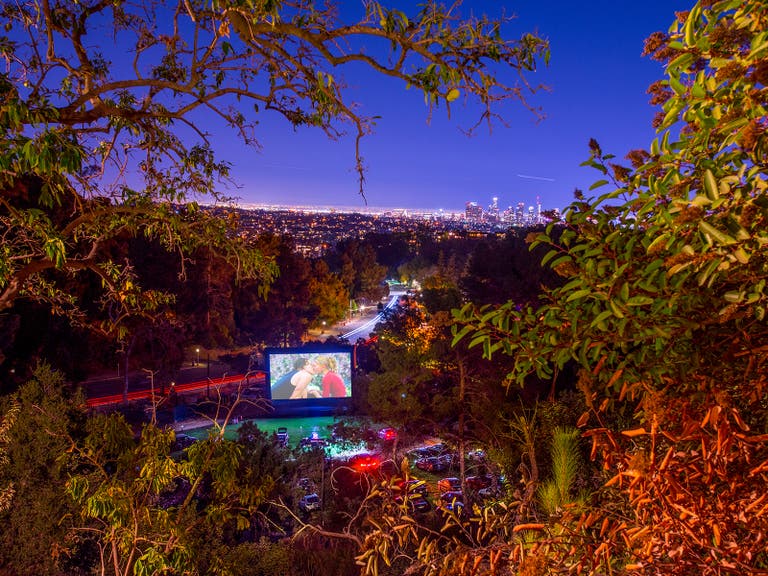Moby's Los Angeles Architecture

GRAMMY-nominated musician Moby has had a lifelong interest in architecture and photography. After he moved to Los Angeles, Moby was fascinated by the “strangeness and the randomness” of L.A. architecture. Comparing the architecture in Los Angeles with New York and other cities, Moby said that in L.A. the “great architecture is hidden, and it’s weird, and that’s what led me to start my weird architecture blog.”
In the following video interview with 1883 Magazine, Moby talks about some of his favorite Los Angeles buildings and landmarks. Read on for more information about these architectural gems.
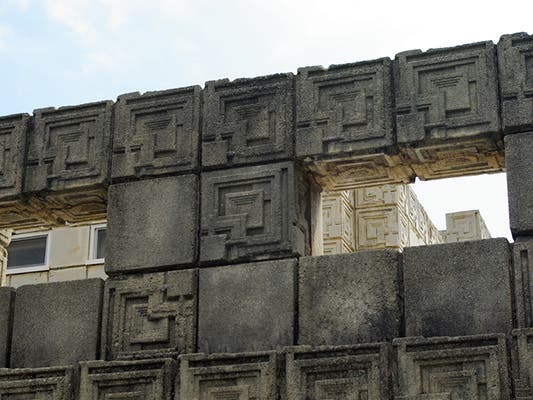
Ennis House
Located in Los Feliz, the Ennis House is a residential dwelling designed by Frank Lloyd Wright for Charles and Mabel Ennis in 1923, and built in 1924. In the 1883 Magazine interview, Moby praises the Ennis House as “probably the most iconic piece of L.A. residential architecture.” He also thinks “it’s the strangest house I’ve ever seen in my entire life,” comparing it to a “Mayan spaceship from 100,000 years ago.” It’s an appropriate description: the Ennis House design is based on ancient Mayan temples, and the ornamentation on its textile blocks is inspired by buildings in the Mayan city of Uxmal in Mexico. The Ennis House has made numerous film appearances, perhaps most famously in Blade Runner. The Ennis House is designated as Los Angeles Historic-Cultural Monument #149, California Historical Landmark #1011, and is listed in the National Register of Historic Places.
2607 Glendower Ave., Los Angeles, 90027
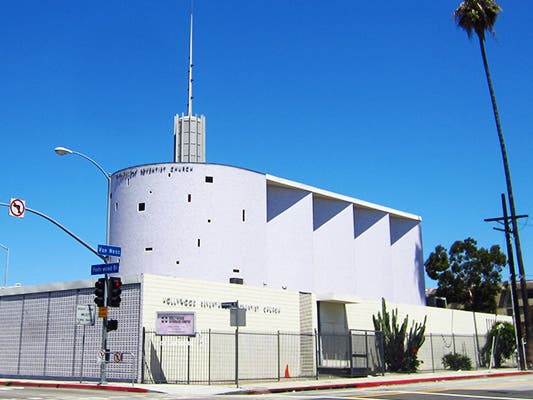
Hollywood Adventist Church
The Hollywood Adventist Church is a Seventh-day Adventist congregation, easily seen from its location on Hollywood Boulevard and Van Ness, just off the 101 Freeway. Of the uniquely-designed building, with its mixed-bag architectural style and faded purple exterior, Moby said simply, “there’s a weird beauty to it.” According to Wikipedia, the Seventh-day Adventist Church is a “Protestant Christian denomination distinguished by its observance of Saturday, the original seventh day of the Judeo-Christian week, as the Sabbath, and by its emphasis on the imminent second coming (Advent) of Jesus Christ. The denomination grew out of the Millerite movement in the United States during the middle part of the 19th century and was formally established in 1863.”
1711 N. Van Ness Ave., Hollywood, 90028
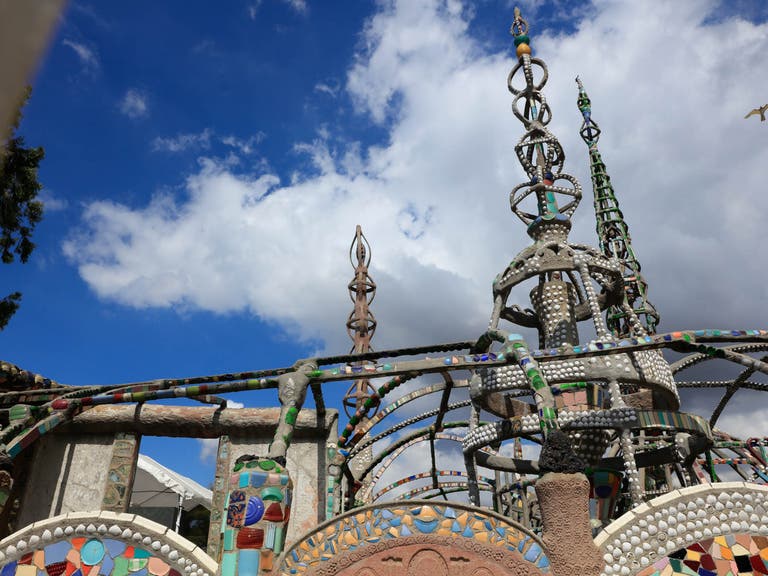
Watts Towers
The world-famous Watts Towers are a collection of 17 interconnected structures, two of which reach heights of over 99 feet. “It’s one of the things I love about L.A.; it makes no sense to me,” said Moby. “It’s completely arbitrary and amazing.” The Towers were built by Italian immigrant construction worker Sabato (aka "Sam" or "Simon") Rodia in his spare time over a period of 33 years, from 1921 to 1954. Rodia called the towers Nuestro Pueblo ("our town" in Spanish) and built them with no special machinery or even a blueprint, working alone with hand tools and window washer's equipment. The Watts Towers are located near the 103rd Street-Kenneth Hahn Station of the Metro Rail Blue Line. The landmark is officially known as the Watts Towers of Simon Rodia State Historic Park, and is operated by the City of Los Angeles Cultural Affairs Department in partnership with the Los Angeles County Museum of Art (LACMA). The Towers are designated as Los Angeles Historic-Cultural Monument #15, California Historical Landmark #993, and are listed in the National Register of Historic Places. They were declared a National Historic Landmark in 1990.
1727 East 107th St., Los Angeles, 90002
The Villa Carlotta
The Villa Carlotta is an “amazing apartment building” located at the corner of Franklin Avenue and Tamarind Avenue. The Villa Carlotta is designated as Los Angeles Historic-Cultural Monument #315. Moby describes the four-story Carlotta as “so dark and gothic...it’s kind of like a smaller version of what the Chelsea Hotel used to be, where you have no idea who’s living there.” Curbed LA investigated the Carlotta’s mysterious past, revealing that it was built in 1926 for the estate of Thomas Ince. Its construction was supposedly financed by William Randolph Hearst because of his guilt over Ince’s death after a trip on Hearst’s yacht.
Another story comes from the New York Times, which said the Carlotta was built to house the staff of the Chateau Élysée, a luxury apartment building across the street that now houses the Church of Scientology. According to the Times, famous Carlotta residents have included George Cukor, Edward G. Robinson, and Louella Parsons, who “wrote her column from her apartment there, and was married in its lobby.” After an extensive renovation, The Villa Carlotta is now an extended stay hotel.
5959 Franklin Ave, Los Angeles, 90068
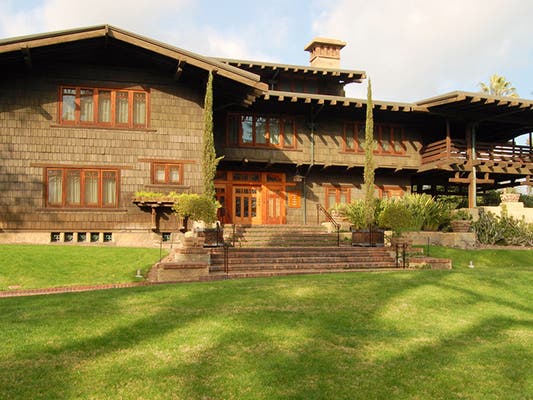
The Gamble House
The Gamble House in Pasadena is widely regarded as a masterpiece of the Arts and Crafts Movement in American Craftsman style architecture. Moby said that Arts and Crafts buildings are “Japanese inspired...but also kind of traditional American architectural vernacular as well.” Of Arts and Crafts residences, Moby notes that “normally they’re quite modest...the Gamble House is one of these small houses that’s been fed steroids. It’s like the form of a small house expanded to a mansion.”
The three-story house and its furnishings were designed by Charles and Henry Greene in 1908 for David and Mary Gamble of the Procter & Gamble Company. Today, the house is owned by the City of Pasadena and operated by the University of Southern California School of Architecture. Two fifth-year USC architecture students live in the house full-time; the resident students change every year. Movie fans may recognize the house as Doc Brown’s mansion from the Back to the Future movie trilogy. The Gamble House is designated as California Historical Landmark #871 and is listed in the U.S. National Register of Historic Places. The house was declared a U.S. National Historic Landmark in 1977.
4 Westmoreland Place, Pasadena, 91103
